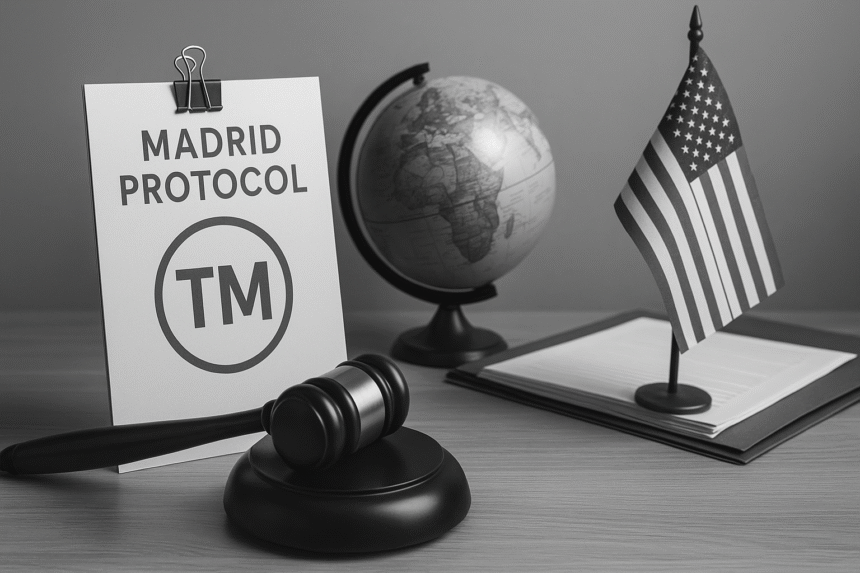How to Register a Trademark Internationally (Madrid Protocol Guide)
Introduction: Why International Trademark Registration Matters
Imagine launching your brand in your home country, gaining traction, and then expanding abroad—only to discover someone else already owns your brand name in that market. Unfortunately, this happens often. Trademark disputes can halt global growth, increase legal costs, or even force rebranding.
If you’re planning to take your brand global, registering your trademark internationally isn’t optional—it’s essential. This guide walks you through how to do it via the Madrid Protocol, a system that streamlines the process of registering trademarks in multiple countries.
By the end of this article, you’ll know exactly who should use the Madrid Protocol, how to complete the process, and what pitfalls to avoid.
Who This Guide Is For
This guide is designed for:
- Startup founders expanding into new markets
- Legal advisors or brand consultants
- Small businesses launching overseas products
- Entrepreneurs in e-commerce, SaaS, or franchising
You’ll find this helpful if:
- You already have a registered trademark in your home country
- You want to protect your brand in more than one country
- You’re looking for a cost-effective international solution
Step-by-Step: How to Register a Trademark Using the Madrid Protocol
Step 1: Register Your Trademark Nationally First
Why it matters: The Madrid Protocol requires that you already have a registered or pending trademark in your home country—this is called the “basic application” or “basic registration.”
How to do it:
- File for a national trademark through your country’s trademark office (like the USPTO, EUIPO, or EGPO).
- Wait until it’s registered (or at least filed, depending on the country).
Tips:
- Make sure the national application covers all the goods/services and the logo/design you’ll need internationally.
Step 2: Choose the Countries Where You Want Protection
Why it matters: You can only get protection in countries that are members of the Madrid Protocol.
How to do it:
- Review the full list of over 110 countries that participate (including EU countries, China, Japan, Australia, and more).
- Decide which markets you’ll enter now or in the near future.
Common Mistake to Avoid:
- Don’t apply in countries where you don’t plan to do business—it just adds unnecessary cost.
Step 3: File an International Application Through Your Home Trademark Office
Why it matters: The international process starts through your national office (called the Office of Origin).
How to do it:
- Use your national office’s Madrid application system or form.
- Include details from your national registration.
- List the target countries.
- Pay the fees (basic fee + additional fees for each country).
Fees Tip: Use the WIPO fee calculator to estimate total costs.
Step 4: WIPO Reviews and Registers Your Trademark
What happens next:
- The World Intellectual Property Organization (WIPO) reviews your application.
- If everything looks good, they register the trademark in the International Register and send it to each designated country.
Timeframe: Usually takes about 2 months.
Step 5: Each Country Examines Your Trademark Separately
Why it matters: While the process is unified, each country still applies its own rules.
How it works:
- National trademark offices (e.g., China’s CNIPA, UAE’s Ministry of Economy) examine your application.
- They can approve, reject, or ask for clarification.
- You’ll get a “provisional refusal” notice if there are issues.
How long it takes: Typically 12–18 months.
Pro Tip: Work with a local lawyer in that country to respond to any objections.
Step 6: Monitor and Renew Your International Trademark
Why it matters: Trademark protection lasts 10 years, but must be renewed.
How to do it:
- Renew through WIPO directly.
- Update ownership or address changes via WIPO.
Mistake to Avoid:
- Forgetting renewal deadlines can result in total loss of protection.
Mini Case Study: How an Egyptian Tech Startup Protected Its Brand Globally
A Cairo-based SaaS startup launched an AI tool that quickly gained traction in MENA. As part of their funding round, investors asked for proof of brand protection in the UAE, Saudi Arabia, and Germany.
The company had a registered Egyptian trademark. Through the Madrid Protocol, they filed one application covering the target countries.
WIPO processed the application and sent it to local offices. Saudi Arabia issued a refusal due to similarity with an existing name, but the startup’s legal team responded with a clarification letter and prevailed.
Total cost: less than filing separately. Total protection: three major markets secured in under 18 months.
Summary Checklist
Here’s a simplified checklist of the process:
Closing Thoughts + Call to Action
Registering your trademark internationally may seem overwhelming at first, but the Madrid Protocol makes it much easier and more cost-efficient than filing country by country. It protects your brand, reassures your investors, and prepares your business for global expansion.
Need help drafting or reviewing your trademark application?



Leave a Reply